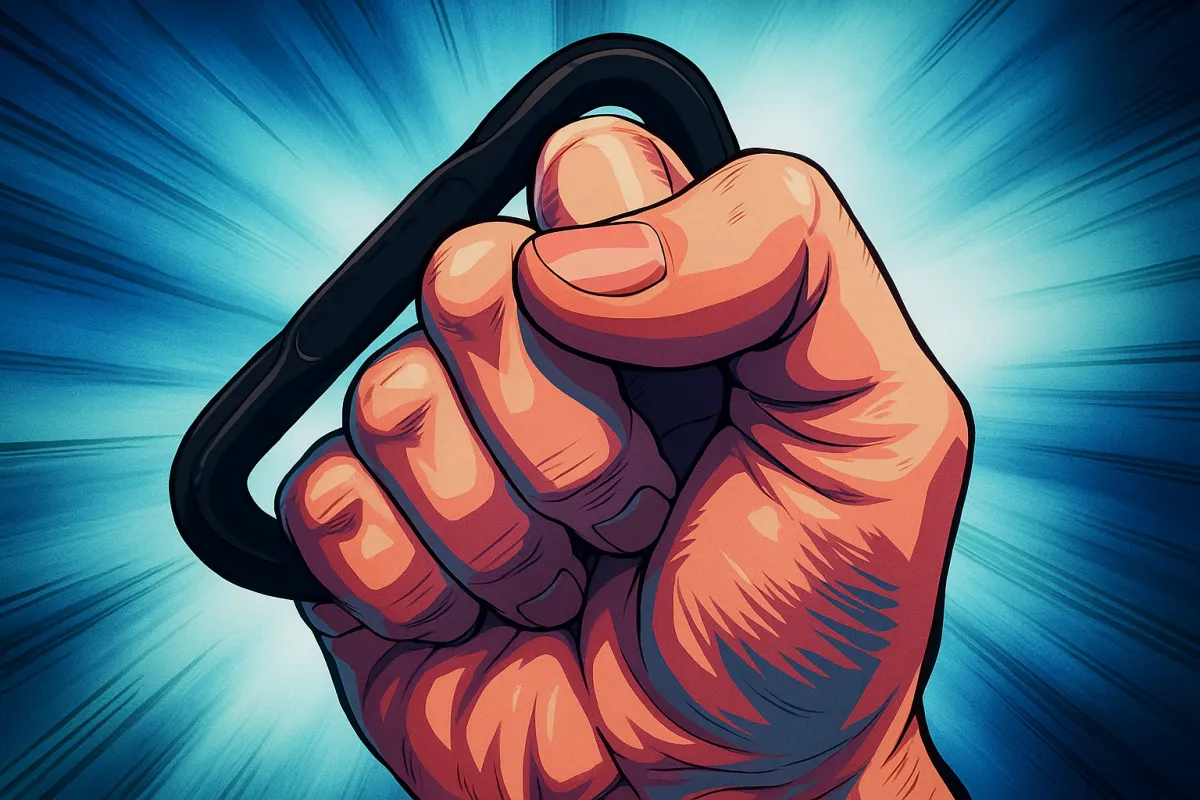
Using a Carabiner as Brass Knuckles: Detailed Guide
Can you use a carabiner as brass knuckles? Yes — but with serious limitations. Carabiners can be used as an improvised self-defense tool due to their hard metal frame and ergonomic shape, but they’re not designed for striking and can cause injury to the user. While generally legal to carry, using one as a weapon may still lead to legal consequences depending on intent and local laws. This guide covers everything you need to know, including practicality, effectiveness, safety, and legal considerations.
If you’ve ever looked at your carabiner and wondered, “Could this work as a self-defense tool?” — you’re not alone. While brass knuckles are often illegal or heavily restricted, a simple carabiner may seem like a clever workaround. But is it actually effective — and more importantly, is it safe or legal?
This in-depth guide will walk you through everything you need to know about using a carabiner as an improvised self-defense tool: how it compares to brass knuckles, how to use it (or not), what the risks are, and whether you could get into legal trouble for it.
What Is a Carabiner?
A carabiner is a metal loop with a spring-loaded gate, most often used in climbing, keychains, and outdoor gear. It's designed to connect components quickly and securely — not for throwing punches.
However, due to its compact size, strong metal frame, and finger-friendly shape, some people see it as a potential substitute for brass knuckles in self-defense situations. But using it this way opens a new set of questions that we’ll tackle below.

How to Use a Carabiner as an Improvised Self-Defense Tool
⚠️ Important: Using any object as a weapon comes with risks. Always prioritize escape and de-escalation over confrontation.
1. Choose the Right Carabiner
Material: Go for steel or high-strength aluminum — avoid cheap keychain models.
Locking Gate: A locking mechanism can help prevent the gate from snapping open during impact.
Size: Pick one that fits comfortably around your fingers without slipping or pinching.
2. Grip & Positioning
Place the carabiner around your fingers so that it reinforces your fist. The flat part of the carabiner should rest against your knuckles, forming a harder surface for impact. Do not grip over the gate unless it is locked — open gates can cause finger injury or collapse on impact.
3. Striking Technique
Recommended: Use downward hammer-fist strikes — similar to kubaton or flashlight techniques.
Avoid: Straight punches. Carabiners aren’t designed for that angle and may twist, slip, or injure your hand.
Other Uses: Apply pressure to soft tissue or use for pain compliance if trained.
Risks & Limitations
Using a carabiner this way might look smart on paper — but in reality, it comes with serious limitations:
Finger Injuries: Carabiners are rigid and may shift or twist, bruising or cutting your hand.
Gate Failures: The gate may snap open during a hit, causing pain or even lacerations.
Lack of Control: Unlike purpose-built weapons, carabiners weren’t designed for combat, which makes their behavior in a fight unpredictable.
Is It Legal to Use a Carabiner as Brass Knuckles?
Here’s where things get tricky.
1. Carabiners Are Legal — But Context Matters
In most places, a carabiner is just a harmless utility tool. That makes it legal to carry — unlike brass knuckles, which are banned in many jurisdictions.
However…
2. Intent Can Turn It Into a Weapon
If you’re caught using — or even carrying — a carabiner with the intent to harm, the law may view it as a weapon. This could lead to charges for carrying a concealed or dangerous weapon, depending on your country or state.
Canadian Example: Even though brass knuckles are prohibited under Canadian law, a carabiner used as a weapon could still lead to legal consequences under the Criminal Code, especially if there’s intent to cause harm.
3. Always Check Your Local Laws
Laws vary widely. In some U.S. states or countries, even using an everyday object in a threatening way can land you in legal hot water. Before carrying or using anything for self-defense, research the regulations in your area.
Safety Tips & Smarter Alternatives
If you're set on carrying a carabiner for utility and possible defense, follow these safety tips:
✔️ Best Practices
Use closed-gate or locking carabiners
Ensure it fits snugly around your fingers
Avoid cheap plastic or keychain models
Practice only downward or pressure-point strikes — not full punches
❌ What Not to Do
Never use it without training or preparation
Don’t punch forward like with brass knuckles
Avoid aggressive posturing — it can escalate situations fast
🛡 Better EDC Alternatives for Self-Defense
Tactical pens
Kubatons
Heavy-duty flashlights
Personal alarms or pepper spray (where legal)
These tools are purpose-built, safer, and often more effective than a repurposed carabiner.
Final Thoughts: Can You Use a Carabiner as Brass Knuckles?
Yes, you technically can — but you probably shouldn’t.
A carabiner is not designed to be used as a striking weapon, and doing so can lead to self-injury and legal risk. While it might work in a pinch, there are better, safer tools available for personal defense.
If you choose to carry a carabiner, use it first and foremost as a utility item, and only consider it as a last-resort self-defense option. And always, always stay informed about the laws in your area.

